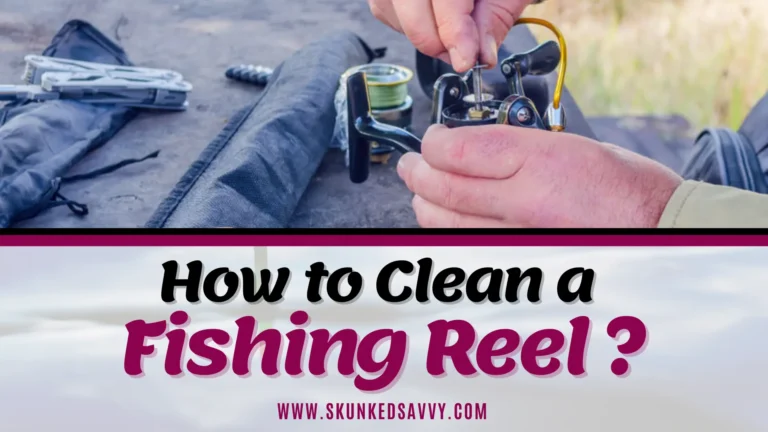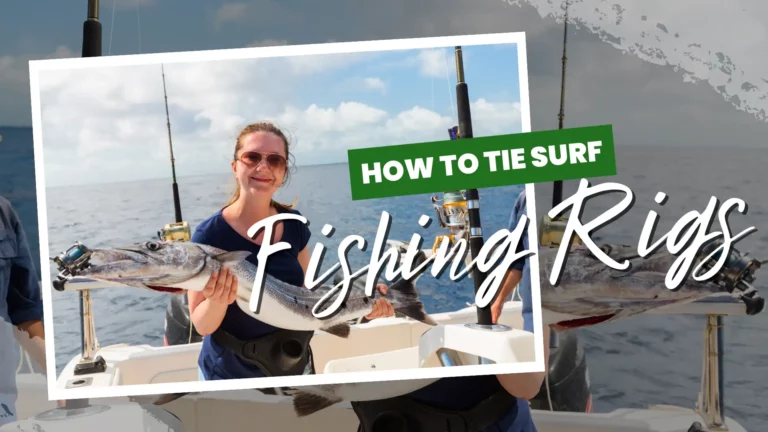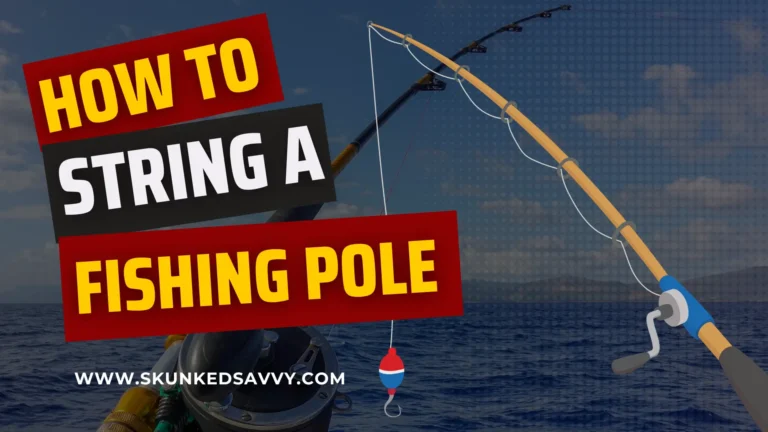Surf Fishing For Red Drum (Where, When & with Which Bait)
Catching a red drum on the surf zone of the beach is the best gift for anglers; actually, it requires both a sharp mind and a lucky day. In my opinion, fishing is an art to catch a living being that has very few chances to come around your bait; therefore, you need a smart mind and a complete plan to catch a red drum, a bulky fish on the shore of the beach.

The red drum resembles the black drum, which is a bit small and has significant differences. People often catch black drums and claim that they got the red drum, but to catch the real deal, you must know the physical characters, habitats & migration patterns, and feeding habits. Come with me to learn how to catch a red drum on the shore of the beach and learn tactics to recognize the fish conveniently.
Surf Fishing For Red Drum
Important:
The first thing you will encounter on the surf fishing tour is the colors of the fish. So, if your target is Red Drum understand its physical characteristics and behavior.
The physical characteristics are known after you have caught the fish; however, if it is visible underwater, you can recognize the fish by its colors. First, we understand the physical characteristics of the red drum and its color or habitats and migration patterns, and then we proceed further.
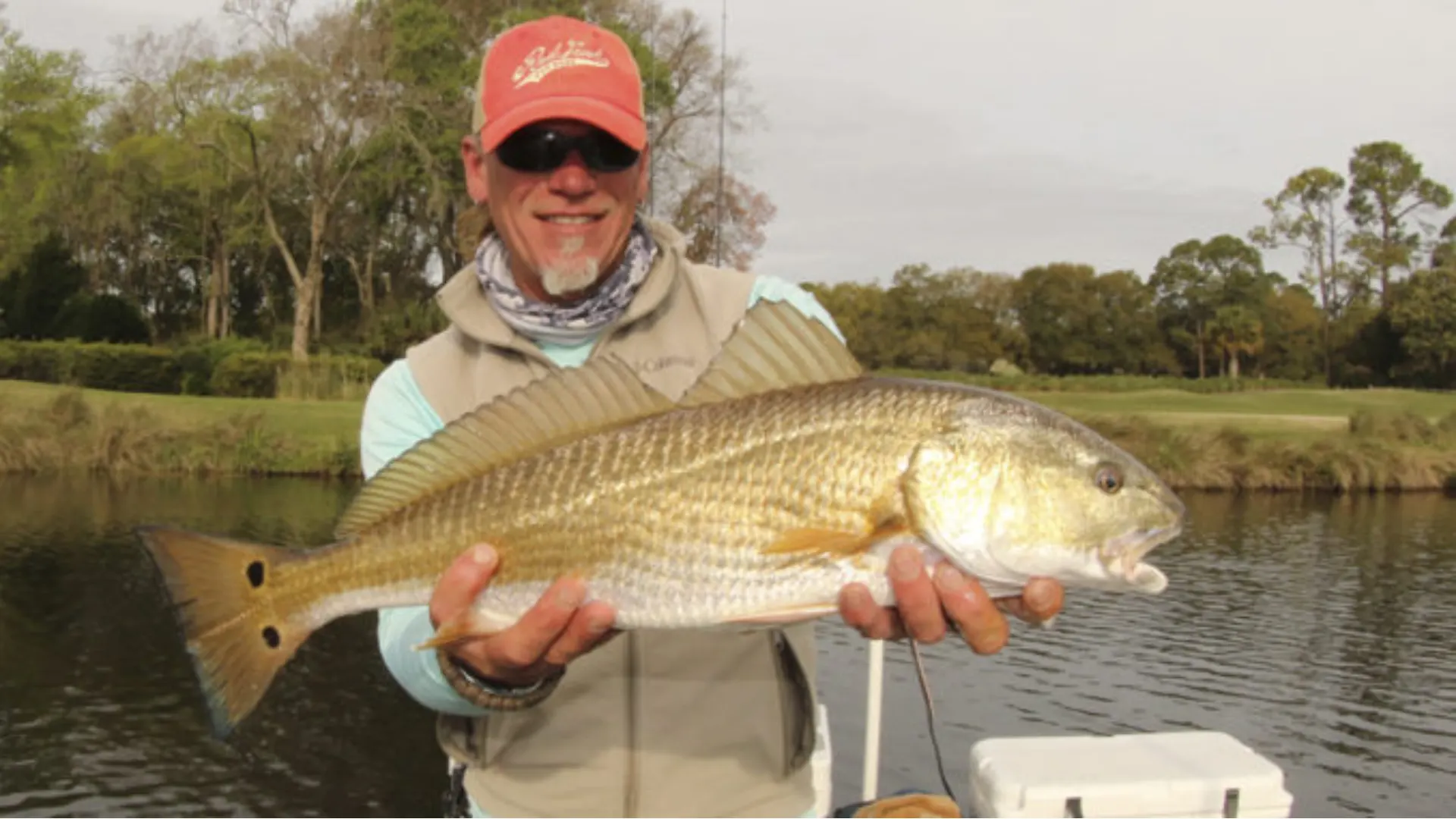
Physical Characters of Redfish
Red drums, also known as the redfish or Sciaenops ocellatus, often appear near the Atlantic coast of North America. The fish is famous because of its large size, and you can spot it by seeing a black dot near its tail. The fish is about 5 feet large and 90 lbs in weight; however, the redfish caught by the anglers has a small size of about 18 inches to 22 inches.
The red drum fish has a dorsal fin and subterminal mouth; in simple words, it is located outside the head. The color of the red drum is silver with a reddish tinge, plus the scales are attached to the skin loosely. Catching a redfish with a bulky body can make your day.
Habitats and Migration Patterns
Important:
If you want to catch a red drum fish, know its habitats and migration patterns.
Knowing where the fish often appears and when it migrates to the next position beforehand will not waste your day, and understand that the fish have migrated from the shore of the beach to another point because of specific factors. Read ahead to discover the habitat and migration pattern of Red Drum.
Habitats
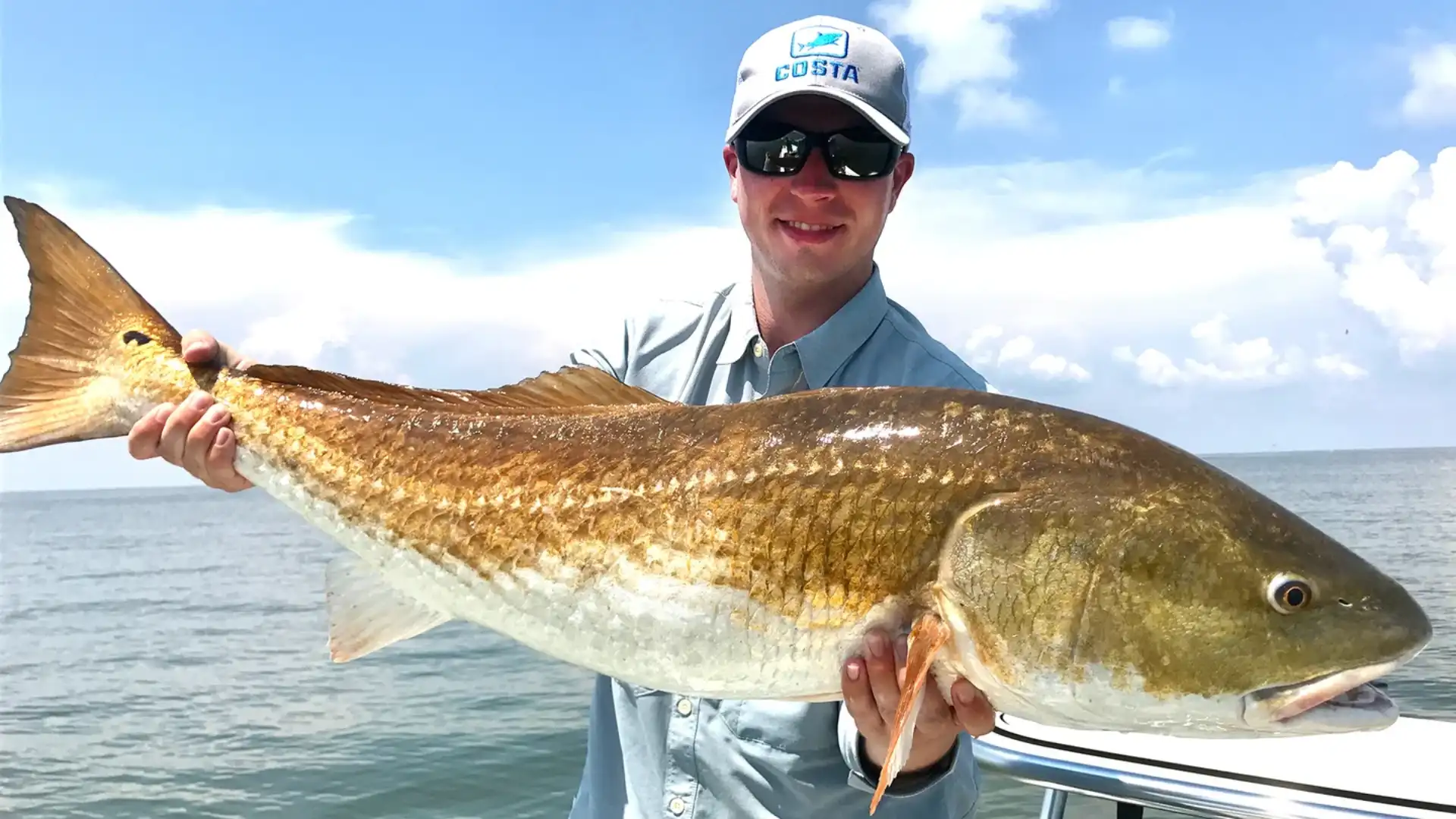
- The red drum fish often appear in estuaries; it is a position in the sea where freshwater mixes and streams with saltwater. You can find red drums in estuaries because they appear in such locations to find food, for instance, oyster reefs, seagrass beds, and mudflats.
- You can also find them on the bays; they come to get more food and sources of energy. Catching a red drum on the bay is the best idea.
- The lands partially enclosed by the water are called sounds; red drums often appear on sounds to find shelter and food. You can catch it on the sounds of the sea.
- Inshore water is a great source of red drum because it mostly appears near the coastal water and shores to eat small fish. Keep your boat near the shore to get red drums.
- The last best position to get a drum is on the offshore, away from the shore of the beach. Redfish do not appear in abundance, but you can find bigger ones here.
Migration Patterns
The migration pattern of red drum fish is a bit strange; redfish move to the north inshore and spawn in the spring season. Whereas, in summer, red drums appear on the inshore water because the food is available in abundance. However, the fish move to the south in warm water as the fall season begins.
Where to Surf Fish for Red Drum?
As I have mentioned, the fish travels from inshore to offshore in search of food. So, you should keep in mind that the fish is after food; therefore, find the position of the sea where you expect more food for the red drum. However, there are a few places where red drums often appear, and you can catch them effortlessly because these are of normal size of 18 to 25 inches and do not require a powerful rod to tackle them.
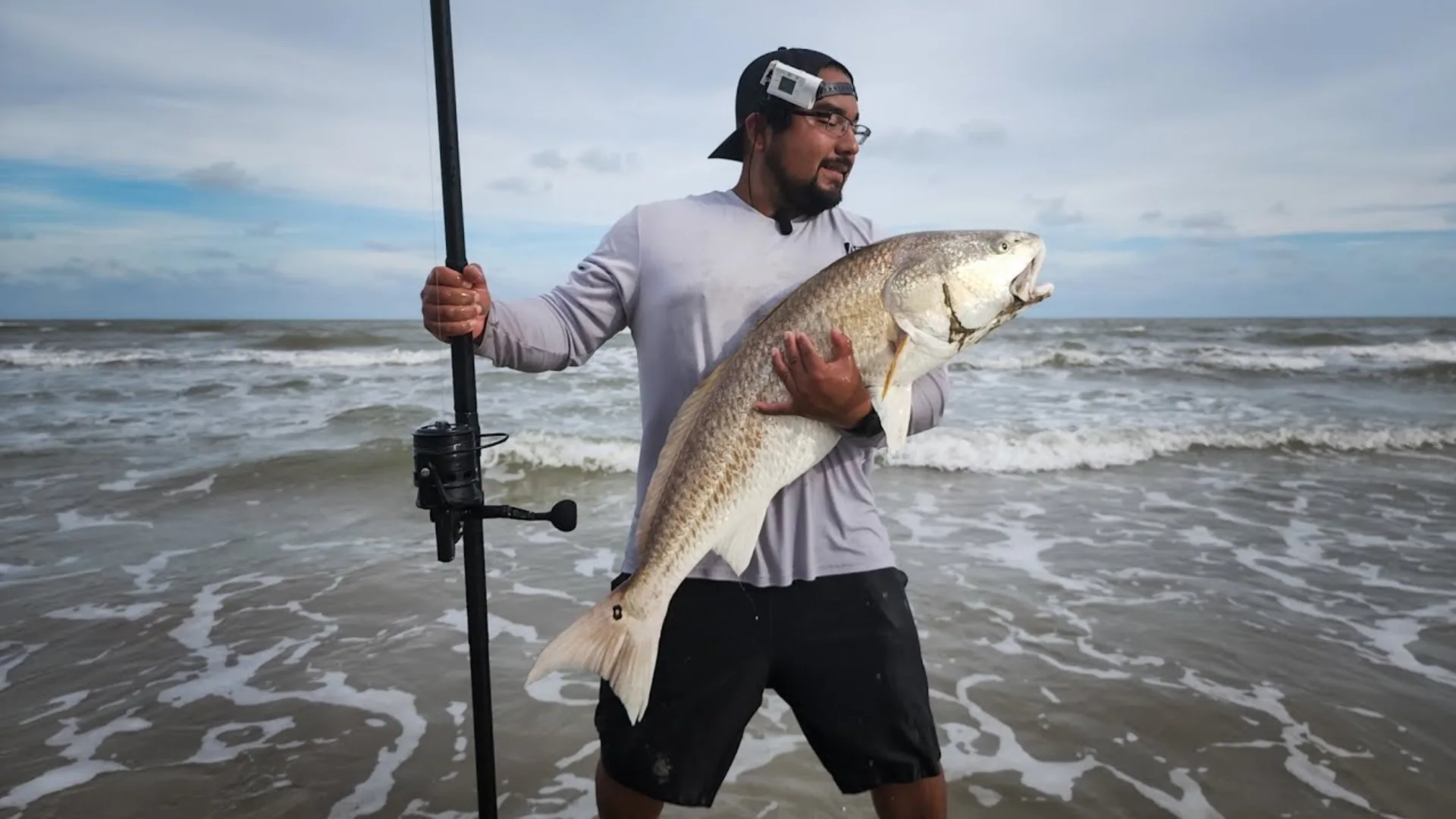
- Deep Water Surf Zones: The first place you can find redfish is the deep water surf zone. The zones with white water are excellent for fishing.
- Calm Coastal Waters: The calm water provides them a more relaxed environment so they can find prey; you can find red drums in the calm water; they mostly spread in such water, so it may take some time to get one in the rod.
- Inlets and Creeks: Another way to find the red drum is by searching in the inlets and creeks because redfish appear here to catch the baitfish. However, the fish is available in abundance, so you can catch it conveniently.
When Is The Best Time To Fish For Red Drums?
Pro Tip:
The Red Fish are found in the warm water, inshore, offshore, and near the calm water in the creeks. So don’t miss these spots.
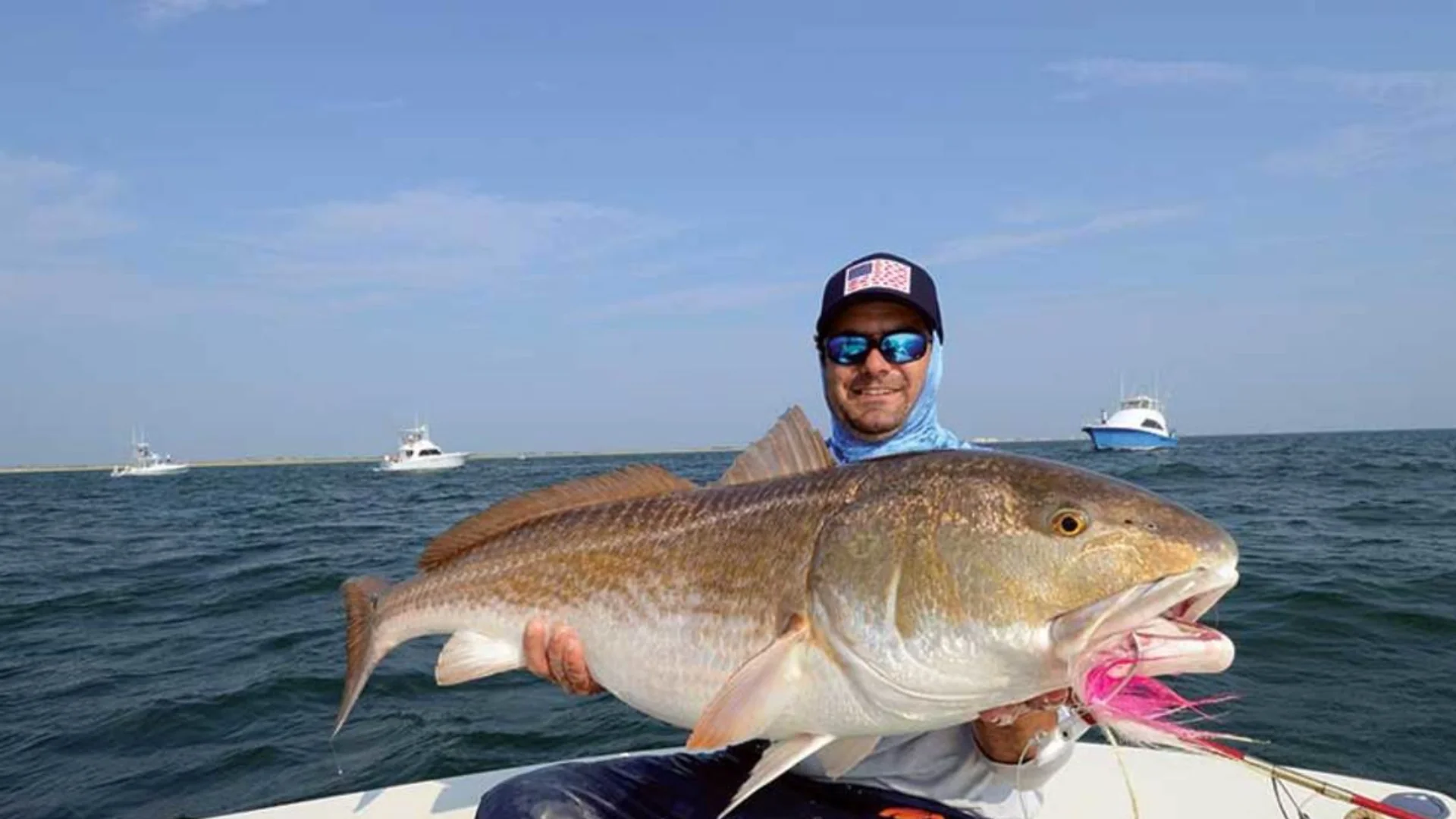
Finding the redfish is not a challenging job; there is a list of the spots in the sea where you can catch them. However, if you want the exact location, then I have a few positions for you where your bait will never come out without red drums.
Tide
The red drum movement changes with the passage of time depending on the tide’s movement. For example, if you observe closely in the low tide, the red drum fish is available abundantly. Basically, the redfish tend to gather on the edges of seagrass beds or in muddy shoals.
Let’s say the seashore has high tides because of season change; now, where should you find the fish? Actually, with high tides, redfish move to the low side of the tide. Now you can find the redfish covered by the tide. Second, redfish often find shelter in the docks, bridges, and jetties of high tides.
Temperature
The second thing you should focus on is the temperature in the water because it is directly associated with the movement of the redfish. For instance, in the cooler temperatures, the red drum is more active and wanders in the water instead of finding shades. Normally, I catch red drums in the cool water because they spread out in it, but the chances are low that you find them in the cool water as they often go from cool to warm water.
Then comes the warm water; redfish’s favorite spot is in the shade. Shade provides two things: first, abundant prey, and second, a bit of calm plus a habitable spot. The shade spots are visible in the water, so instead of wandering in the middle of the sea, you can find redfish in the shadow.
Season
Once you understand the spots and timings of the redfish, nothing can stop you from catching them. When I started fishing, I realized that the red drum was unavailable in the water.
Well, after some research, I found out that the sunlight and the seasons also influence the red drum movement. However, my first discovery was that the summer is the best season to catch the reddish during the sunrise and sunset.
That is because, during the daytime, fish move to deeper sea or towards cool water, but when it comes to dawn or dusk, redfish come towards the warm water as the cool water gets cooler, and the environment is uninhabitable for the red drum. Now, you should note that you can go fishing at dawn or dusk on the shore of the beach.
Second, the fish move towards the shore at dawn time because of light, and the same goes for dusk because the sea gets darker and darker; moonlight is an excellent medium to see prey, so redfish move from the middle of the sea to the shore. I often find big red drums an hour before sunrise and 2 hours before sunset.
If you want to catch fish during spring or winter, then go in the middle of the day in extreme daylight. As you know, redfish are fans of warm water and light; therefore, they come from the very upper layer of the sea near the shore of the beach. An interesting fact is that during the daytime, the upper layer of the water gets hotter and has more light, so the redfish wander here to find food, and it is the best chance that you can catch them.
Best Bait For Red Drum
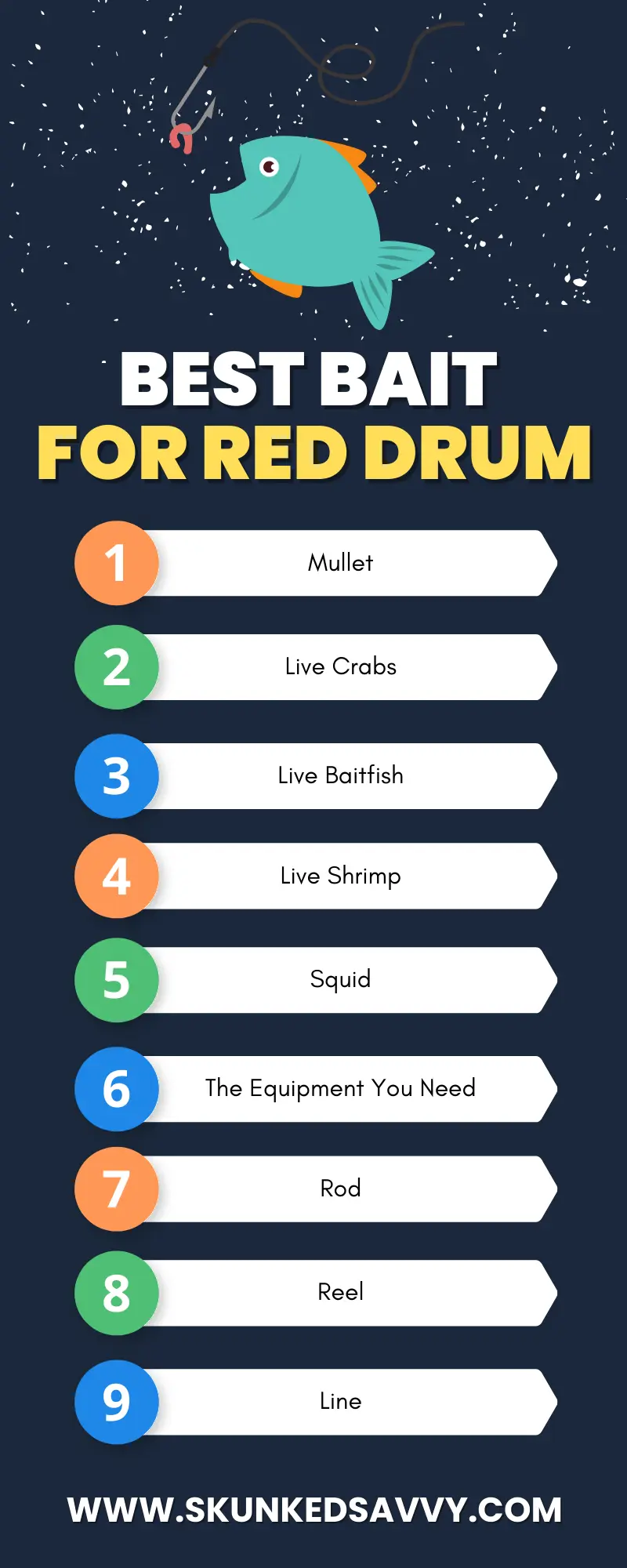
Mullet
I have been using mullet for years, and my conclusion is that mullet is the favorite food of the red drum. The fresh, small-sized mullet is a way to attract bigger, healthier red drums. If you do not know that the mullet is considered one of the best bait for surf fishing, it is a small fish available in freshwater, and saltwater.
Live Crabs
You might wonder that live crabs are unattractive for fish, so why should one use live crabs? Actually, it is useful for catching the red drum because living crabs are one of their favorite foods. However, other fish species avoid eating live crabs because of potential dangers.
Live Baitfish
No one can deny the importance of live baitfish for catching the red drum because they are not only attractive for the red drum but also inexpensive. Live baitfish is widely available in the market, and using baitfish to catch red drum is an affordable deal; plus, redfish find baitfish tasty, so your boat will have an abundance of red drums within a few hours.
Live Shrimp
Another affordable deal is using the live shrimp to prepare for the red drum; basically, redfish do not like to struggle to get prey; therefore, they eat easy-to-catch food. Live shrimp is convenient to eat, so it quickly attracts the fish. Using live shrimp will save you money and make you a red drum-rich angler.
Squid
The last thing I use to find the red drum is the fresh pieces of squid, but the problem is finding squids is a bit difficult. First, they are expensive and not widely available in the market.
Secondly, they often appear under deep and dark water if you try to find them in the sea. However, if you have a squid, then use its fresh pieces to catch redfish.
The Equipment You Need
Lastly, you need a full kit of fishing equipment; otherwise, you will be unable to catch redfish. The majority of people do not focus on the equipment they use, but it is a very significant part of fishing.
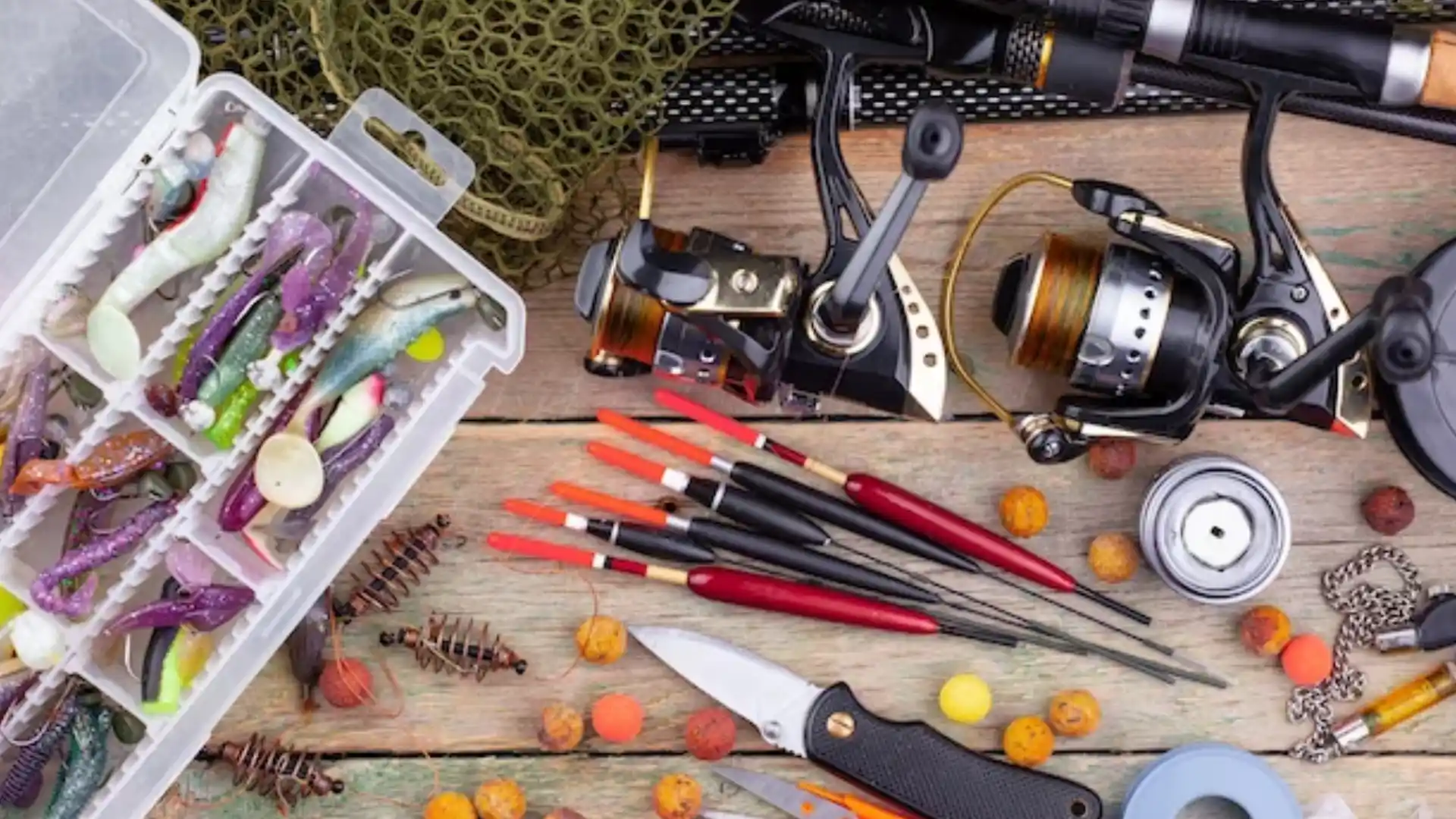
Especially if you are on a quest to find large fish like red drum, then focus on two things: bait and equipment. Here, I have gathered suitable equipment for catching the red drum.
Rod
No one can doubt the specifications of a rod that is useful for catching large fish. I have used multiple small and heavy ones, but the best performing is a rod of 6 to 7 feet. If you have a smaller one, the chances are low that you find a big red drum because small rods offer less energy, and they cannot stand against a powerful redfish.
Furthermore, you should see the toughness and rigidity of the rod. You should know that the bull red drums are very powerful, so they can tear the rod apart if you are using a rod below 7 feet. Always go for more than 7 feet of rod with moderate or fast speed to catch the bull reds.
Reel
Reel size is another thing one should notice for catching the red drums because it can affect your fishing capacity. Basically, the reel is a handmade device to restore the fishing line used in the rod; its capacity and speed can make you a successful or a failed angler. You should choose 2500 to 3500 reel size for catching bull reds.
Line
The line is the cord in the reel used to pull the fish back to the boat; an interesting fact is that the capacity of the line is very important for pulling the fish. For example, if you are catching a red drum, you need an 8 to 15 lbs line. The pound is a measure to understand the power of the line; the more pounds your line is, the tougher the line is, so for catching red drums, you need a tough line of 15 lbs.
FAQs
What is the best gear for redfish?
There are a number of factors involved in determining the best gear; location, time, and season are the major things but the bait you use and the equipment. However, if you are catching a red drum, use a 3500 size reel and 8 to 15 lbs line.
What is the best time of day to fish for red drum?
The best time to catch bull reds is at dawn and dusk because they come near the upper layer of the water to find warm water and light.
Why is it called a red drum?
Basically, it has a red shade on the body with silver-colored skin; that’s why it is called a red drum.
How do you catch a red drum?
To catch the red drum, use baits attractive for the red drum. For example, redfish like fresh cuts of mullet and live crabs. It is one of few fishes that like to eat live crabs but take small-sized ones. You can also use live baitfish, live shrimp, and squid, but the last one is expensive.
What are the advantages of redfish?
Redfish is a very healthy food; first, it has omega-3 fatty acids perfect for increasing brain activity and helps to improve memory. Additionally, redfish have an abundance of protein, which is good for healing injuries, reducing inflammation, and improving the overall health of the consumer.
Final Words
Some people find fishing boring, and they claim that it is a time-consuming process, but as a matter of fact, fishing is a skill in which one has to understand the secrets of water and the fish. For example, if you are fishing every weekend in summer to catch red drum during the day, then the chances are very low that you get one because it is not the right time to catch redfish; you can find other small ones, but not a red bull. Additionally, you should choose the favorite food of redfish for bait; otherwise, you will come empty-handed.
Furthermore, using the right equipment is as important as choosing the right time. People go with a small rod equipped with a weak line and slow reel, but for bull reds, one should be highly reluctant and use suitable equipment.
Anyhow, I have explained everything related to the red drum and how to catch it in all seasons and in all conditions. I hope this information helps you in the future; thank you.


